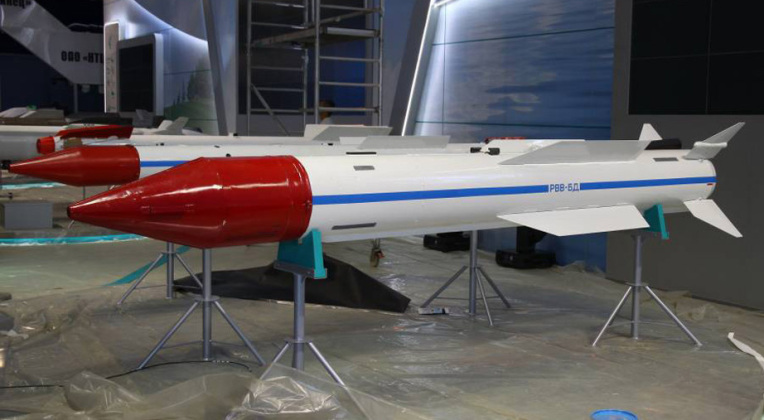News
U.S. Stakes Massive New Claim to Arctic Resources: This is How Russian Air Power Has Prepared to Contest It – Part Two
Continued From Part One
Bearing almost sole responsibility for the security of the Arctic among Russian combat aviation assets, the MiG-31 is by far the largest, fastest and highest flying manned fighter or interceptor anywhere in the word, with a cruising speed of over Mach 2.3 being totally unrivalled – where the F-35 cannot cruise supersonically and the F-22 cruises at only around Mach 1.5. The interceptor is capable of utilising all its weapons in space at altitudes of over 21,000 metres, and according to some reports close to 25,000 metres, and has a combat range over 50 percent longer than either of the American fifth generation jets deployed to the region. Aside from its speed, altitude and particularly large and powerful sensor suite, the MiG-31 has a very high weapons carrying capacity allowing the aircraft to deploy R-37M missiles as its primary armament – the longest ranged air to air missile class outside China with a 400km engagement range, Mach 6 speed and 60kg warhead. With over double the range of any American air to air missile class, the R-37M makes the MiG-31 an optimal aircraft for neutralising support assets such as tankers and AEW&C platforms in the region which are vital to facilitating Western air operations.

Although not capable of engaging stealth aircraft like the F-22 and F-35 at long ranges, unless using targeting data from assets much closer to the targets such as ground based S-400s, the R-37M has proven highly capable against non stealth fighters in the Ukrainian theatre where it has been utilised extensively. MiG-31s can also deploy older R-33 missiles which are well optimised to shooting down cruise missiles, including those with high supersonic speeds or reduced radar cross sections, as demonstrated in multiple exercises, with the Foxhound having for over 20 years been the only tactical combat jet capable of performing cruise missile defence. The aircraft was the first in the world and for decades the only one capable of simultaneously engaging targets in space and at very low altitudes, making it optimal for defence against multiple kinds of missiles and thus a key asset to the security of Russian positions across the region.

In the mid-2010s the Russian Armed Forces restored over a dozen military airfields in the Arctic, with Rogachevo Air Base in the Novaya Zemlya archipelago, Nagurskoye Air Base at on the Franz Josef Land archipelago and Kotelny Airbase on the New Siberian Islands archipelago being among them. The Russian Navy then increased forward deployments of MiG-31s to the Arctic in the early 2020s, with Pacific Fleet MiG-31s newly upgraded to the MiG-31BM standard permanently stationed at the Anadyr Airfield on the Chukotka Peninsula in the far north – a region with a maritime border with Alaska. The Northern Fleet set up its own permeant forward MiG-31BM deployment at Rogachevo Air Base the following month, which placed the aircraft within the Arctic Circle just two months before the U.S. Air Force would make a similar far north deployment of one of its B-1B bombers to Norway’s Bodo Air Base – albeit briefly rather than on permanent deployment. Despite the formidable capabilities of modernised MiG-31 interceptors, their numbers remain very limited and no other fighter or interceptor classes have had a meaningful presence in the region.

Although the expansion of other Russian facilities such as Nagurskoye Airbase in the far north have for years been expected to facilitate greater forward deployments of MiG-31BMs, and possibly of Su-34M or MiG-31K strike fighters, the limited number of aviation units available in the Russian fleet is thought to have been a key reason why this has yet to materialise. The possibly of the Russian Navy or Aerospace Forces standing up one or more new MiG-31 regiments partly in response to expanded American territorial claims in the Arctic, but also to respond to Finland’s accession to NATO, remains a significant possibility. While MIG-31BM regiments are still considered Russia’s most capable aircraft for air to air combat, however, the formation of the first Su-57 fifth generation fighter regiments in the coming years could lead these much longer ranged and lower maintenance aircraft to eventually be favoured for Arctic duties. Significant factors in favour of such a decision include that the Su-57 is capable of deploying a more advanced miniaturised derivative of the R-37M missile, the izdeliye 810, and that development of a successor to the MiG-31 underway under the PAK DP program is expected to continue to face delays. The priority expected to be increasingly afforded to the Arctic means much as is the case for S-500 air defence systems, it is highly possible that the region will be among the first to see significant Su-57 deployments as well.












